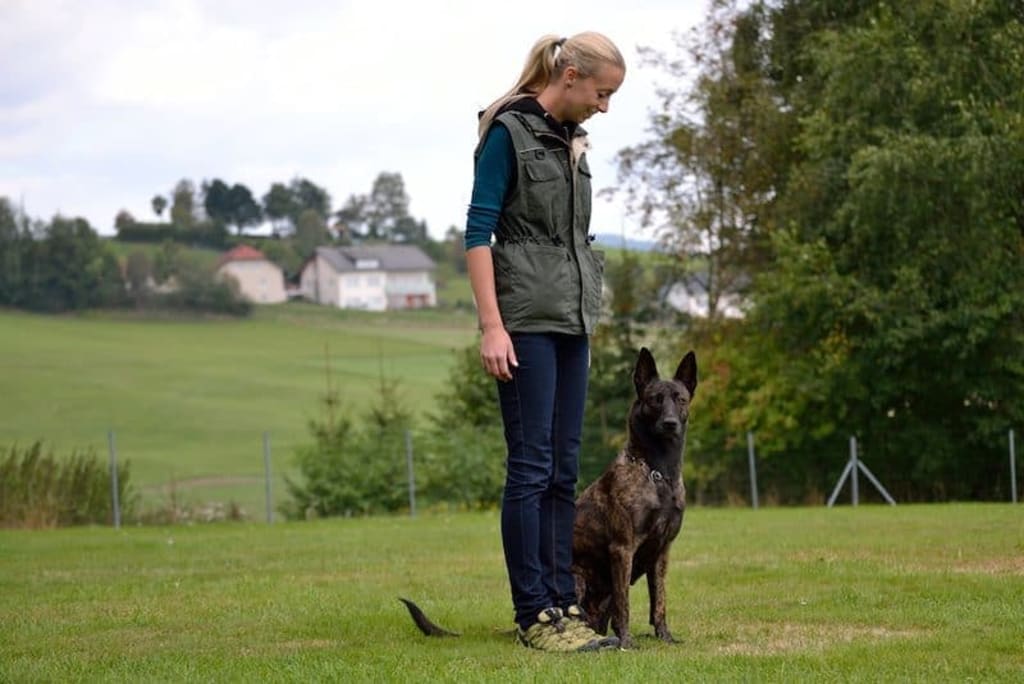How to Train Your Dog to Heel: A Step-by-Step Guide
"Mastering the Art of Heeling: A Comprehensive Step-by-Step Guide to Dog Training"

Training a dog to heel involves teaching your dog to walk closely by your side without pulling on the leash. This is an important skill for any dog, and can be helpful in many situations. Here's a step-by-step guide to train your dog to heel:
Step 1: Get your dog used to wearing a leash and collar. Start by putting the collar on your dog and allowing them to wear it for a short time each day. Gradually increase the amount of time they wear the collar until they are comfortable with it.
Step 2: Teach your dog the "sit" and "stay" commands. These commands are important building blocks for teaching your dog to heel. Practice these commands until your dog responds reliably.
Step 3: Start walking your dog on a leash. Begin by walking your dog in a quiet, low-distraction environment. Use a short leash and keep your dog close to you.
Step 4: Use a treat or toy to lure your dog into position. Hold a treat or toy close to your dog's nose and lead them into position on your left side. Keep the treat or toy close to your leg to encourage your dog to stay close to you.
Step 5: Reward your dog for walking in the correct position. When your dog is walking closely by your side, reward them with a treat or toy. Be sure to praise your dog and use a happy tone of voice to reinforce good behavior.
Step 6: Practice, practice, practice. Keep practicing the heel command in a variety of environments and situations. Gradually increase the duration and difficulty of your training sessions as your dog gets better at heeling.
Step 7: Fade out the treats and toys. Once your dog has learned to heel reliably, begin to phase out the use of treats and toys. Your dog should be able to heel without the need for constant rewards.
Step 8: Reinforce good behavior. Always be sure to praise and reward your dog for heeling correctly. This will help to reinforce good behavior and make heeling a natural part of your dog's routine.
With patience and persistence, your dog can learn to heel reliably. Remember to always use positive reinforcement and make training a fun and enjoyable experience for both you and your dog.
Additionally, here are some tips to make the training process more effective:
Keep training sessions short and frequent. Dogs have a short attention span, so it's better to have multiple short sessions rather than one long one.
Be consistent in your commands and rewards. Use the same command every time you want your dog to heel, and reward them every time they do it correctly.
Avoid pulling on the leash. Instead of pulling your dog back into position, stop walking and wait for them to come back to your side. This teaches your dog that heeling is their choice, not something that is forced upon them.
Practice in different environments. Once your dog has mastered heeling in a quiet environment, practice in busier places with more distractions. This will help your dog generalize the skill to different situations.
Use positive reinforcement. Instead of punishing your dog for not heeling correctly, reward them for doing it right. This creates a positive association with heeling and makes your dog more likely to repeat the behavior in the future.
Remember that training takes time and patience, and every dog is different. Don't get frustrated if your dog doesn't pick up heeling right away - just keep practicing and rewarding good behavior, and eventually they will get it. With consistent training and positive reinforcement, you and your dog can enjoy a happy and stress-free walk together.
About the Creator
Enjoyed the story? Support the Creator.
Subscribe for free to receive all their stories in your feed. You could also pledge your support or give them a one-off tip, letting them know you appreciate their work.






Comments
There are no comments for this story
Be the first to respond and start the conversation.